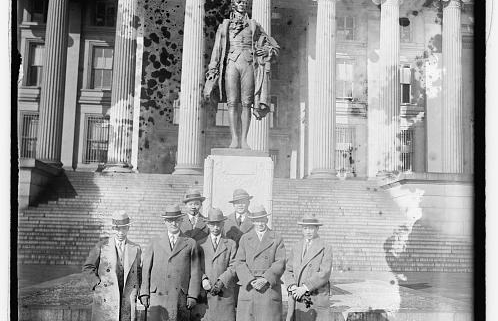17 Days Remaining
December 17th, 1943: “Be it enacted by the Senate and House of Representatives of the United States of America in Congress assembled, That the . . . Acts or parts of Acts relating to the exclusion or deportation of persons of the Chinese race are hereby repealed…”
In the midst of the Second World War, in an effort to improve U.S. relations with China, Congress signed the Chinese Exclusion Repeal Act, also known as the Magnuson Act, into law. It had been 61 years since the Chinese Exclusion Act of 1882 prohibited all immigration of Chinese laborers. This outwardly racist and discriminatory law was repealed in a very strategic political effort to combat the efforts of Japan to weaken ties between China and the United States.
The right to citizenship and the right to vote were well overdue, as Chinese immigrants had long faced discrimination and oppression at the hands of the U.S. government. The Act was certainly a major step in the right direction, but there were many racially charged measures that had already been put in place to restrict Chinese citizens from reaping the benefits of U.S. citizenship, and major fractures within society that needed to be addressed.
As historian and author, Roger Daniels, said in his comprehensive work, “Guarding the Golden Door: American Immigration Policy and Immigrants Since 1882.”
“Although it was only a small step toward an ethnically egalitarian immigration and naturalization policy, it can now be seen that the repeal of Chinese exclusion was the hinge on which the nearly closed golden door of immigration began to swing open again.”
It has been a topic of contention whether the Magnuson Act was anything more than a symbolic gesture. However, the passage of this Act did catalyze conversation, good or bad, on immigration at large in America. The fine print showed evident continued restriction on Chinese immigration, as the annual quota was limited to just 105 new entry visas per year. This number was incredibly disproportionate to figures from the 1940 U.S. census, which placed the population of Chinese citizens in America at well over 100,000. By these estimates, an appropriate quota would have been significantly higher, as the numbers reflected an allowance of just two percent of the Chinese immigrant population already in the United States. This system of immigration would be the standard for the next 22 years, until the Immigration and Nationality Act of 1965 was passed.
Stay tuned for Day 16!




Leave a Reply
Want to join the discussion?Feel free to contribute!